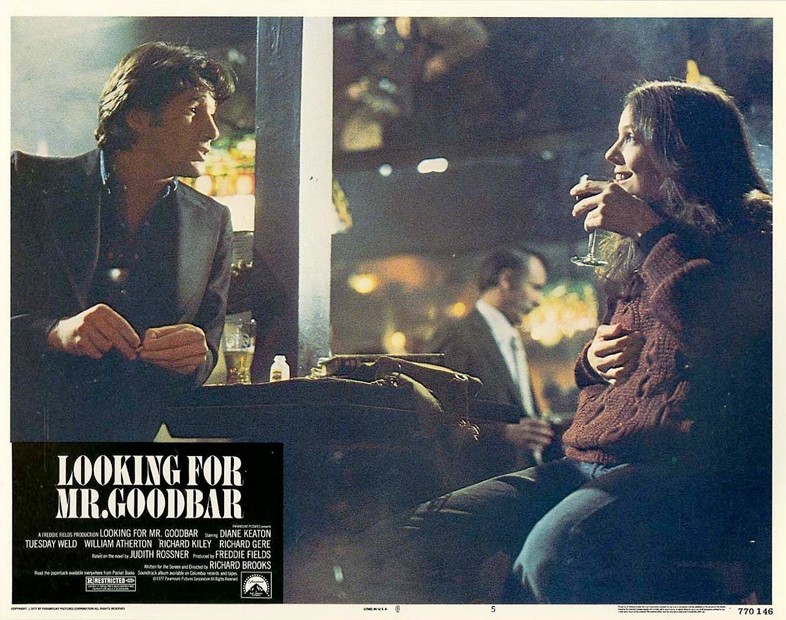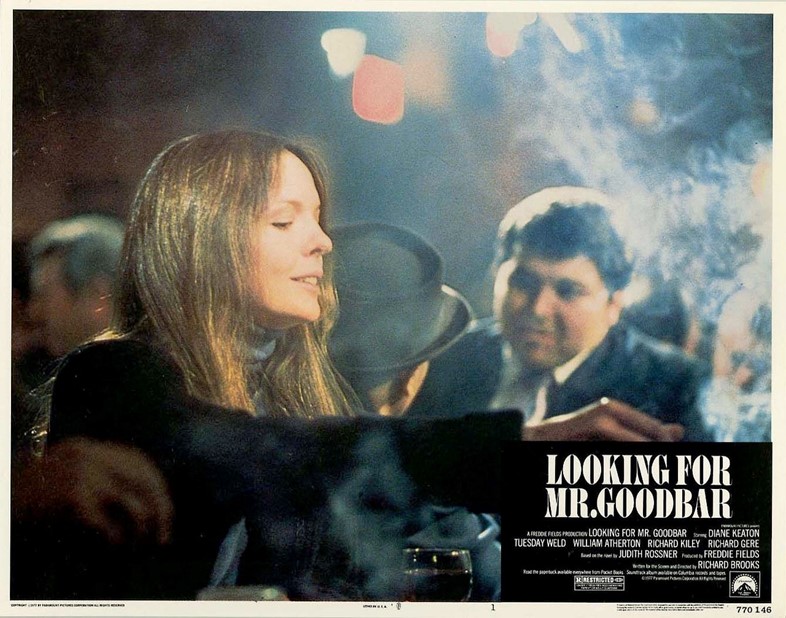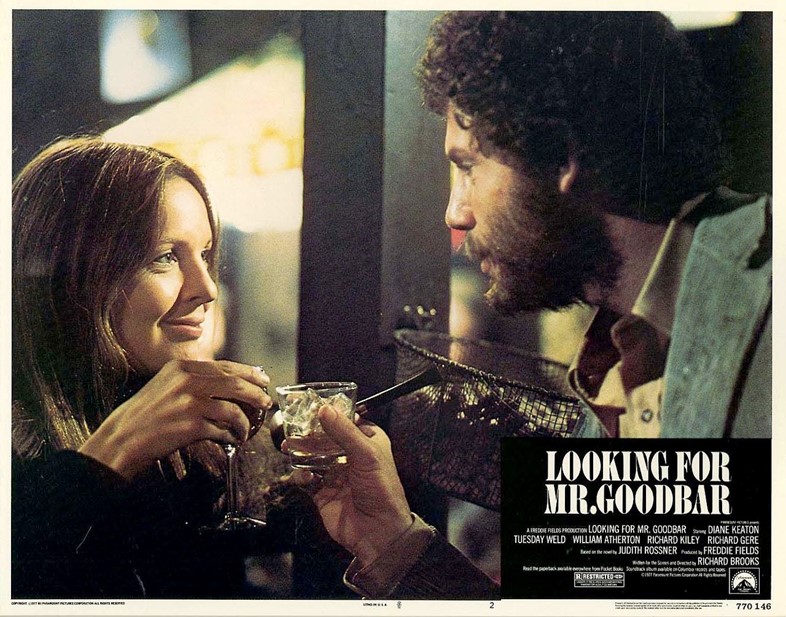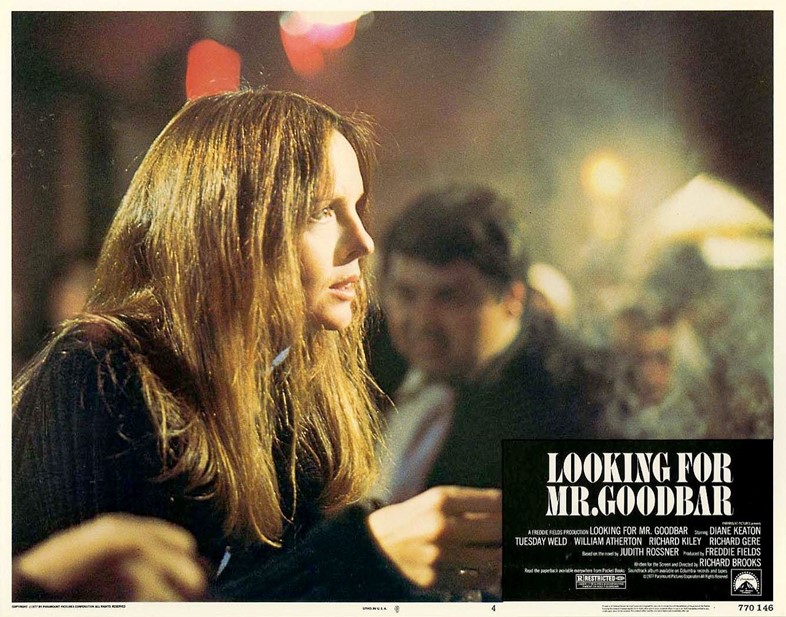Sexual thrills and insouciant fashion: we examine the style codes of this iconic 70s drama
Diane Keaton had just played everyone's favourite neurotic Annie Hall when she starred as Therese in Richard Brooks' sexual thriller Looking for Mr. Goodbar. Based on a lurid bestseller by a little-known writer named Judith Rossner, Brooks' adaptation was an odd mishmash of exploitation film, coming of age yarn and rom-com – the Guardian's Peter Bradshaw once described at as akin to watching Annie Hall through the looking glass. Though very different from her performance in Woody Allen's beloved film, Keaton's effervescent charm nevertheless shines through.

The book was based on a true story: on the evening of New Year's day in 1973, a New York school teacher named Roseann Quinn was brutally murdered by a man she'd picked up in a bar across the street from her apartment building. Her story became a macabre cause celebre, a cautionary tale ramped up in tabloid stories warning young women of the perils of casual sex. Brooks, then the veteran director of Cat on a Hot Tin Roof and In Cold Blood, focused his lens on Therese (his version of Quinn) as she navigates a steamy after-hours Chicago, cruising singles bars and picking up men against a jangling disco soundtrack. According to Frank Rich in his Time magazine review, Keaton "creates a heroine who is at once sexual aggressor and victim, lady and tramp, and she relentlessly savages most pat notions about the nature of womanhood." Though the film's values are deeply confused, sartorially speaking, it was a triumph. Annie Hall's iconic costumes were legendarily inspired by Keaton's own style of dress; in Goodbar, her wardrobe is less eccentric, but no less stylish, working just as well for the character's school-teacher days as her barfly nights. Here, we consider the lessons we can learn from this cult curio.

1. Night time, my time
The 1970s are often referenced as a golden age of American auteur cinema, and particularly its night-worker sub-genre. Goodbar, though a less distinguished offering, has a place in the pantheon of urban, night-set films laced with threat, from Taxi Driver to American Gigolo (strictly a film from 1980, but a vivid example of writer-director Paul Schrader's shadowland oeuvre), which somehow managed to make insomnia look chic.

2. Less is more
Unlike her flashy air stewardess sister, all feathered hair and plunging necklines, Therese's wardrobe is a lesson in effortless style, a compendium of 70s essentials and a masterclass in tonal dressing. There are crisp shirts tucked into A-line denim skirts, cinch-waisted plaid dresses, loafers, knee-high riding boots worn over jeans, wide-leg trousers and a whole lot of jersey (that mainstay of day-to-night). Therese manages to pick up Richard Gere wearing nothing more ostentatious than jeans and a black polo-neck sweater.

3. A beret can look insouciant, even when worn indoors
In search of freedom from her oppressive Catholic family, Therese takes up residence in what could best be described as a squat so the fact that she wears a beret indoors is unsurprising, given her circumstances and the notoriously cold Chicago winters. A staple of Beatniks and Black Panthers, Keaton carries the look with aplomb, avoiding those cutesy Parisian overtones. It has the added benefit of mussing up hair when whipped off, providing volume with minimum effort.

4. 70s lighting is very flattering
The delicate shimmer of a disco ball as it flickers across cheekbones; the subdued light of a dive bar; the penumbra of a candle-lit studio apartment: the lighting in the 1970s was soft and seductive, smoothing out everyone's edges. No wonder people lived their lives at night.

5. Pick your partners wisely
Moralisers may continue to tut at Therese's lifestyle, particularly given her unfortunate end. But her trouble begins far earlier when she embarks on an affair with a narcissistic and faintly absurd creative writing teacher, the first in a long line of seductions. Of all the duds and hustlers she takes up with, this one is surely the most offensive and teaches us to avoid having an affair with a married professor at all costs.
